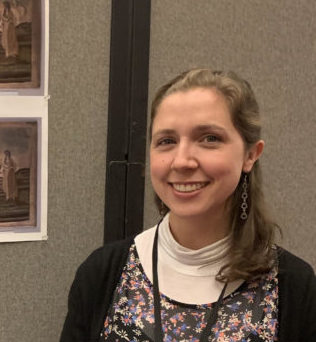A Stitch in Time: Preserving 18th-Century Textiles
Event Details
Event Details
Painted Cloth: Fashion and Ritual in Colonial Latin America features 300-year-old fabrics, from satins and silks to alpaca fleece. Each require expert care to make them last for future generations. Two textile conservators talk about preservation techniques for historic tapestries and costumes, and how textiles better our understanding of the colonial past.
Funding provided by the College of Liberal Arts, College of Fine Arts, and the School of Architecture.
ABOUT OUR SPEAKERS

Laura García Vedrenne
After working at Mexico’s National History Museum and the Museo Textil de Oaxaca, since 2019 she works at the Textile Conservation Laboratory of the de Young Museum, at the Fine Arts Museums of San Francisco (FAMSF). She has a M.Phil. in Textile Conservation from the Centre for Textile Conservation and Technical Art History (CTC-TAH) at the University of Glasgow, and B.Sc. in Restoration from the Western School of Conservation and Restoration (ECRO) in Guadalajara, Jalisco.

Mónica Solórzano Gonzales
Art historian and textile conservator. She holds a PhD in History from the Pontificia Universidad Católica del Perú. She currently is associate professor at the Universidad Nacional Mayor de San Marcos. Permanent, where she also works as Director of the Conservation and Restoration Program.
Image Credit: Chasuble (back), New Spain (now Mexico), circa 1750, silk and metallic thread embroidered on silk satin, center back length 82 6/10 × 27 1/2 in., Museo Franz Mayer, Mexico City (photo: Francisco Kochen)
Time
(Thursday) 5:00 pm(GMT-05:00)


I’m very much looking forward to this presentation. As an ardent collector of antique textiles in miniature, I care very much about taking the proper care of fabrics and textiles. I also am interested in learning about other types of tapestries and needlework, and weaving, from other eras and cultures.